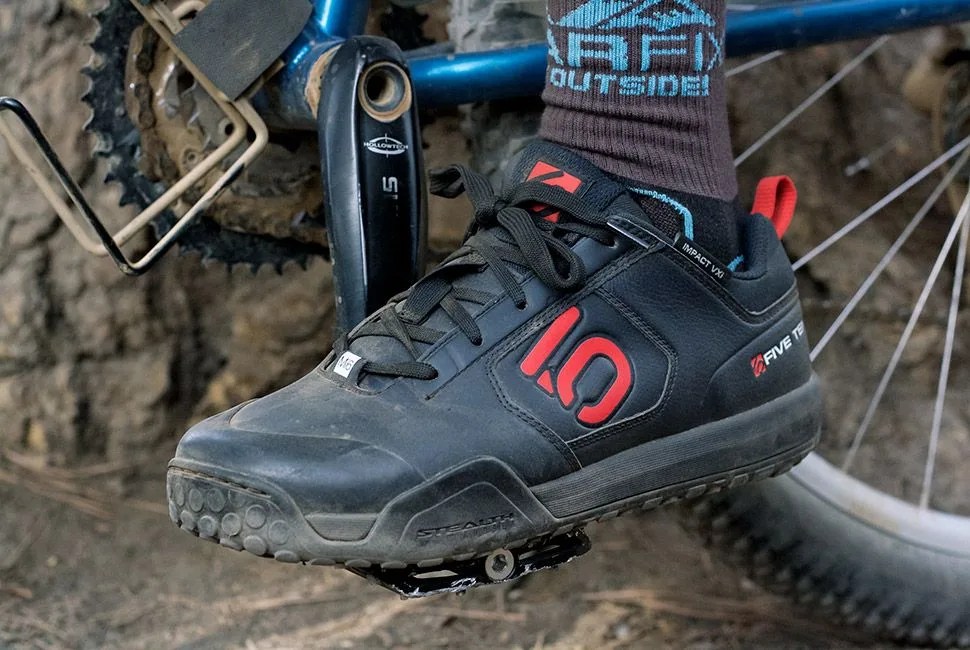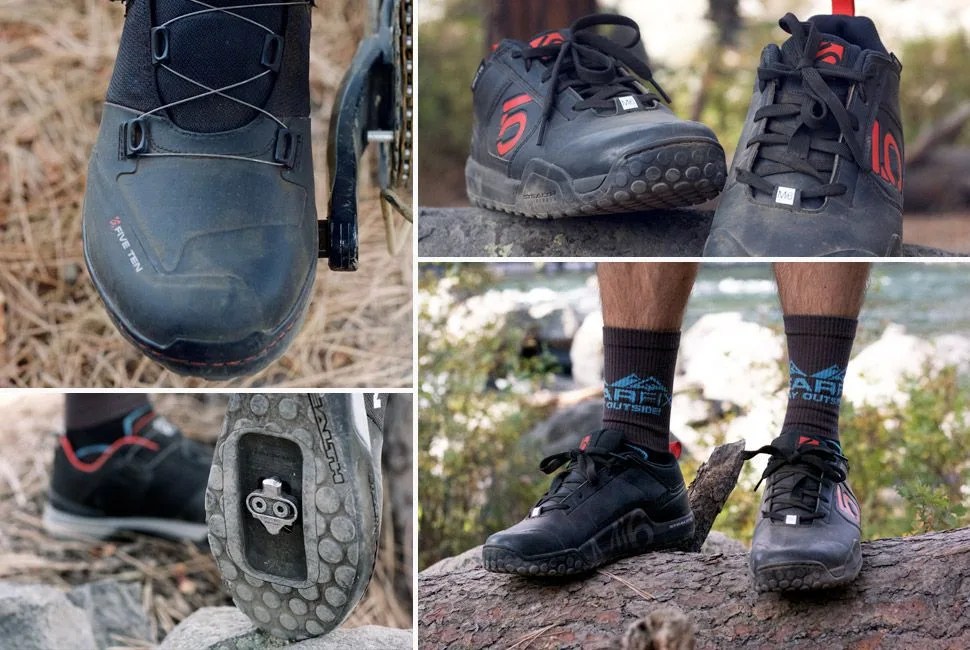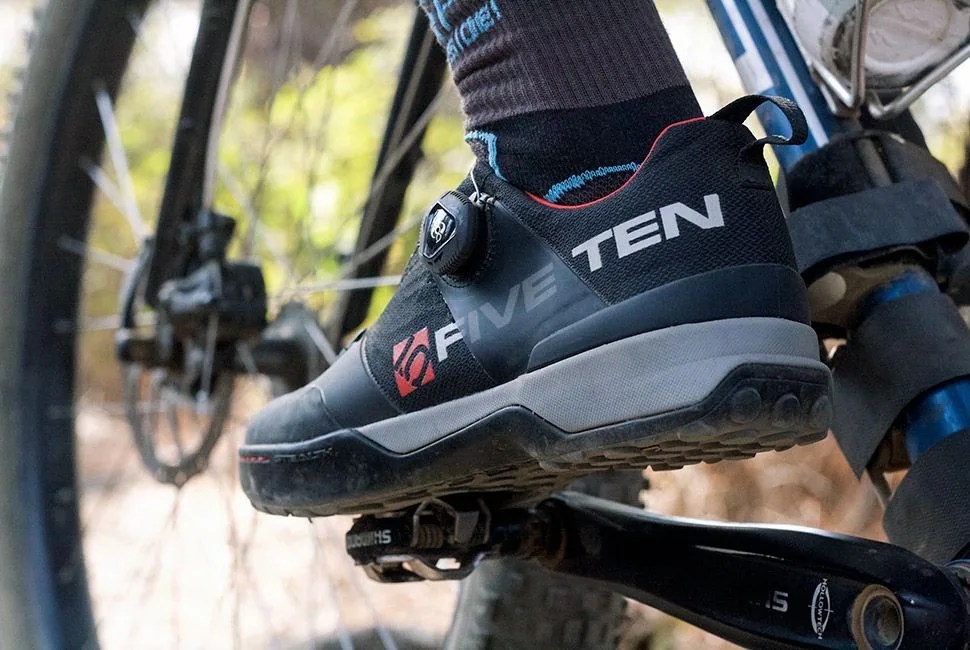FiveTen has been making some of the industry’s best rock-climbing shoes for decades now, and every mountain biker worth their salt was grateful the company decided to give bike shoes a shot 15 years ago. Their approach to shoes (intended for climbers to wear during rocky approaches to their vertical climbs) worked just fine on the pedals through the late ’90s, but their MTB-specific models released since then, like the Hellcat and Freerider, have offered riders increased stability and comfort tailored for use on contemporary pedals and all forms of dirt. In keeping with their tradition of constantly improving on purpose-built footwear, FiveTen currently offers two of the best trail-riding kicks around: the Impact VXi (a sneaker-style platform pedal shoe for the all-mountain rider) and Kestrel (a clip-less shoe with a streamlined profile, rigid midsole and BOA closure).
FiveTen Impact VXi

One of the ways FiveTen shoes have benefited cyclists is by gently pushing back against the trend in the bike world of shrinking shoe profiles. The Impacts VXis, though thinner than some of FiveTen’s other offerings, can only be described as chunky. They are wide enough for normal-to-wide feet and don’t skimp on the cushioning that is essential to a mountain-bike rider’s overall foot comfort. I have wide feet and often have trouble finding a shoe that fits well, but the Impact VXi is wide enough for me to feel comfortable without the shoe feeling loose.
This is a shoe I would wear to the trail, on the bike, and even for a walk around town.
The traditional lace closure allows for a truly customized fit from heel to toe. I like my shoes loose over the instep and tight up at the ankle to really lock down my heel, and laces accomplish this more readily than other closure methods. Some folks worry that laces will get caught on debris while riding off road — and though I’ve never had a problem with that, the laces can easily be tucked in.
As for the feel, the Mi6 rubber compound is the stickiest rubber I’ve ever ridden, and combined with a pair of pinned-out VP Vice pedals there was more than enough connection to the bike (I almost convinced myself I could supply upward force). The shoe’s shank and midsole are also stiff enough for efficient energy transfer, but not so stiff that I was uncomfortable during hike-a-bike sections. On the contrary, this is a shoe I would wear to the trail, on the bike, and even for a walk around town after a ride.

